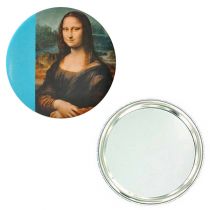Cart is empty
This reversible RING in gilded brass and natural stone is inspired by a gold, garnet and glass necklace from the Hellenistic period in the Louvre's Department of Greek, Etruscan and Roman Antiquities.
Element of a necklace
Kerch (ancient Panticapaea), Hellenistic period (323 - 31 BC)
Original gold, garnet, glass
Louvre Museum, Paris
In the 7th century BC, Greek settlers from Ionia founded a city named Panticapaeum on the shores of the Kerch Strait (modern-day Crimea), at the top of Mount Mithridates. Situated at the junction of trade routes between Asia and Europe, Panticapaeum experienced significant growth, becoming the capital of the kings of Bosporus, occasionally referred to as the Cimmerian Bosporus (5th - 4th century BC), and minting its own coins from the middle of the 6th century BC. The upper town features a colonnaded palace, as well as the temples of Apollo, Artemis, Zeus and Demeter. The city's decline was caused by the advances of neighbouring peoples, such as the Sarmatians
(from the 3rd century BC), and by economic competition in the grain trade, particularly from Egypt.
Archaeological excavations began in 1830, unearthing the Acropolis, and revealing royal skeletons, numerous gold and bronze coins, stelae, vases, gold and silver ornaments, as well as jewellery - such as this medallion, which is a necklace component made of gold and garnet or red glass, featuring two loops.













.jpg)



